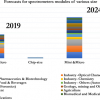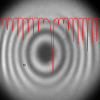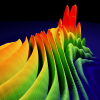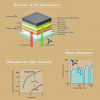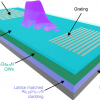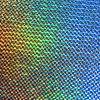A research team of physicists from Harvard University has developed new hand-held spectrometers capable of the same performance as large, benchtop instruments. This reported in APL Photonics, and derives from their work in meta-lenses.
To maintain performance while reducing spectrometer size, the researchers have developed a spectrometer incorporating meta-lenses that combine the functionalities of a traditional grating and focusing mirror into a single component, as well as having much greater ability to spatially separate wavelengths. In all, the overall size of the spectrometer is significantly reduced without sacrificing performance.
“This research has its roots all the way back to 2011, when we were investigating the fundamental properties of light as it interacts with two dimensional metamaterials (metasurfaces) and discovered generalised laws for the refraction and reflection of light for metasurface, which are powerful generalisations of the textbook laws valid for ordinary surfaces”, explained Federico Capasso of Harvard.
Unlike traditional refractory lenses that are millimetres thick and have a characteristic curved surface, a meta-lens is a completely flat or planar lens made up of millions of nanostructures. Using lithographic techniques, proper placement and fabrication of these nanostructures enables similar or better functionalities compared to traditional lenses. These meta-lenses can be customised to a user’s specifications, and mass-produced using the same foundries that produce computer chips. “For these reasons, we believe meta-lenses to be game-changers”, Capasso said.
The next step toward realising the full potential of these meta-spectrometers is to improve the performance of the prototype for both the working wavelength range and spectral resolution. This would allow it to be used for a wide variety of analyses, including those to identify proteins or gene markers (Raman spectroscopy), which typically involve onerous processes with sophisticated equipment in a full-size laboratory.
“The goal is to be able to achieve comparable levels of performance with a simple ‘plug-and-play’ two-component device, i.e. a meta-lens and a detector, which together function as a meta-spectrometer”, Zhu said. “The potential for this already exists in the meta-lens technology; it is simply a question of finding the right configurations and making it work.”







